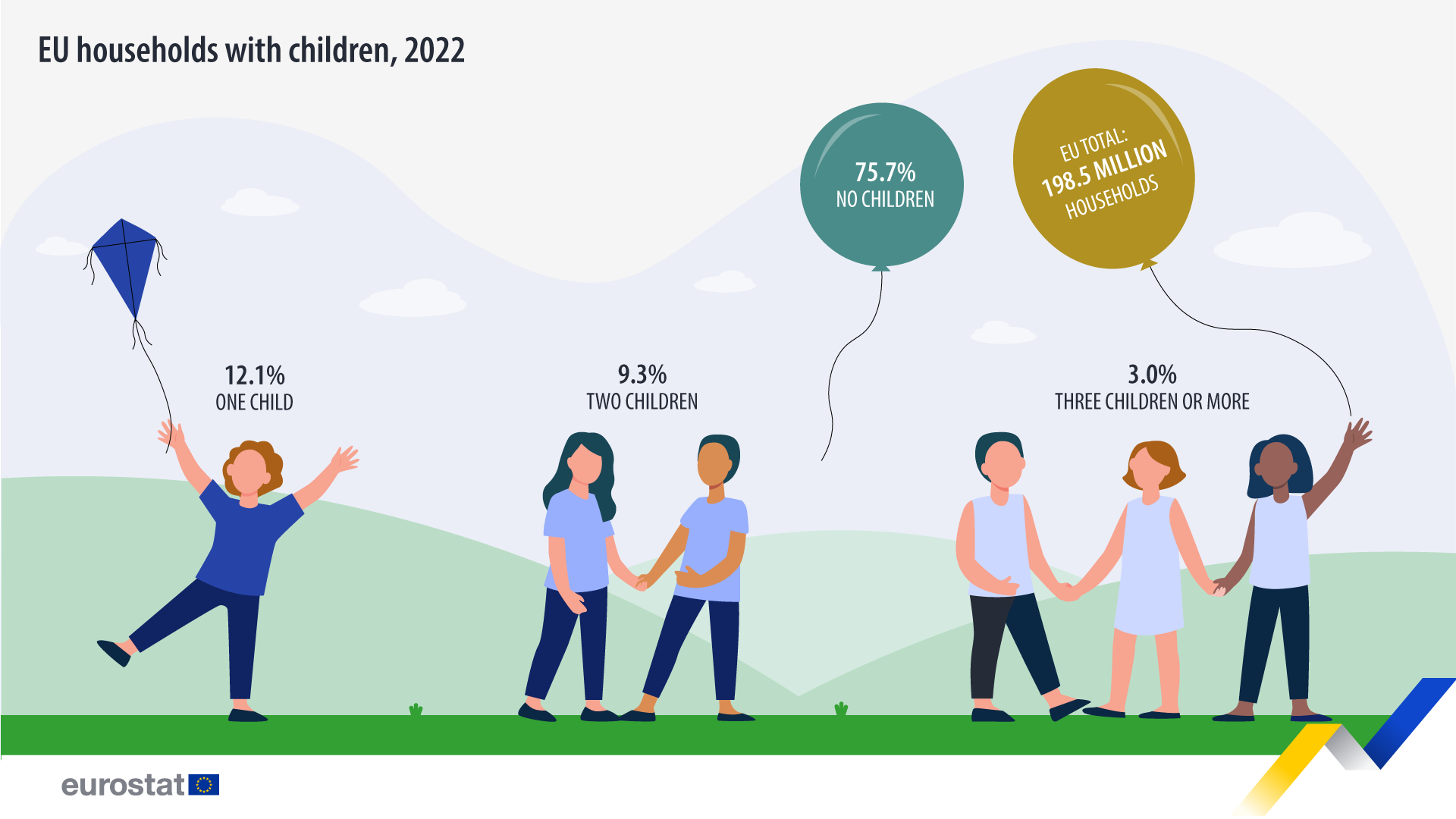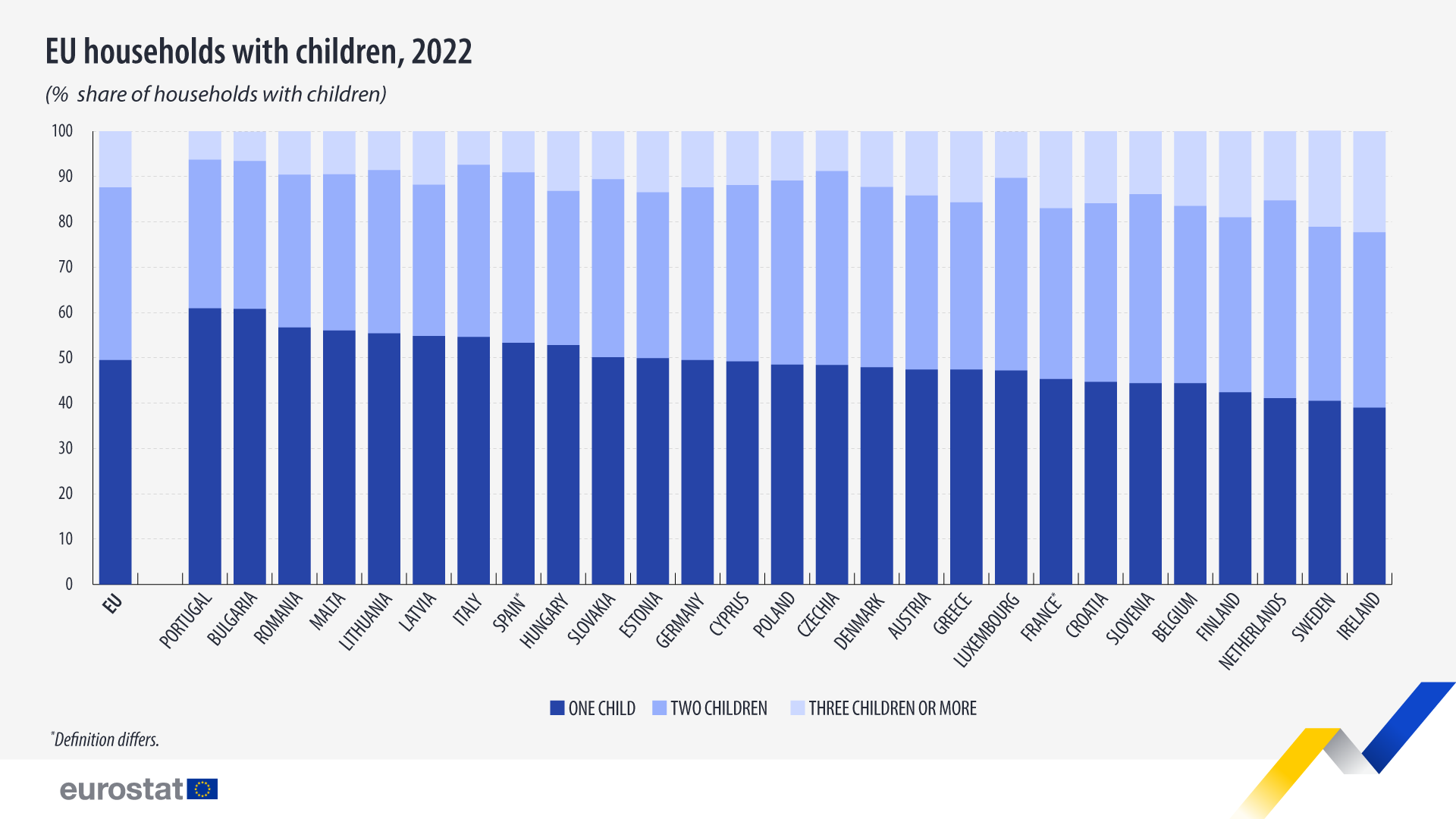Nearly 25% of EU households had at least 1 child in 2022

In 2022, in the EU, there were nearly 200 million private households. Slightly less than a quarter of those (24.3%) included children. Around 10% of households included either 1 child (12.1%) or 2 children (9.3%), while only 3.0% of the EU’s households included 3 children or more.
The total number of households in the EU rose by 6.9% between 2012 and 2022. The percentage of households which included at least 1 child decreased by 2.4 percentage points (pp) in the same period.
The highest shares of households with children were recorded in Slovakia (33.9%), Ireland (32.2%) and Cyprus (30.6%), while the lowest shares were in Finland (18.4%), Germany (20.1%) and the Netherlands (21.8%).
Source dataset: lfst_hhnhtych
One child households were most common among households with children in 26 EU countries
For households with children, those with 1 child were the most common in the EU. Almost half of the households with children had 1 child (49.5%) in 2022, while 38.1% had 2 children and 12.4% included 3 or more children.
Households with 1 child were the most prevalent among households with children in all EU countries, except for the Netherlands, where households with 2 children had a higher percentage. More than half of the households with children were with 1 child in Portugal, Bulgaria, Romania, Malta, Lithuania, Latvia, Italy, Spain and Hungary.
Households with 3 children or more were the least common across all EU countries. Their percentage among all households with children ranged from 22.3% in Ireland, 21.2% in Sweden and 19.0% in Finland, to 6.3% in Portugal, 6.5% in Bulgaria and 7.4% in Italy.
Source dataset: lfst_hhnhtych
This article is published on World Children’s Day, celebrated annually on 20 November, aimed at promoting international togetherness, raising awareness about children worldwide and improving children's welfare.
For more information
- Statistics Explained article on household composition statistics
- Thematic section on employment and unemployment (LFS)
- Database on employment and unemployment (LFS)
- Thematic section on youth
- Database on youth
- Thematic section on population and demography
- Database on demography, population stock and balance
Methodological notes
- A child is defined as a household member aged less than 18 years.
- Data on household composition derives from the European Labour Force Survey (EU-LFS), under the Regulation (EU) 2019/1700 on European statistics relating to persons and households, based on data at the individual level collected from samples.
- France and Spain: definition differs.
If you have any queries, please visit our contact us page.


